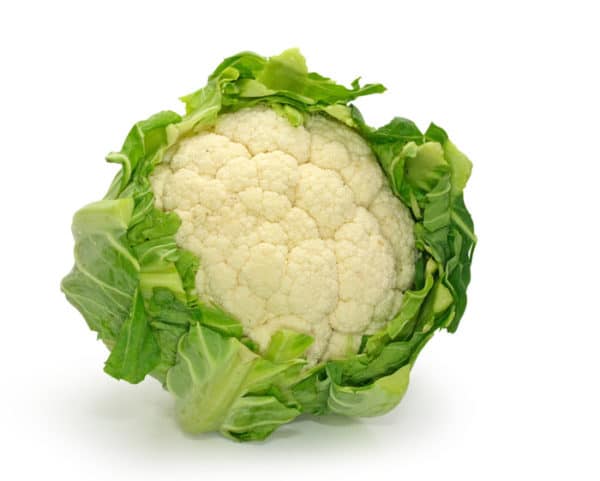
You will likely have many obese clients come to you with health problems. Obesity is a growing 
A parent or a child may come see you for symptoms that they may not associate with their obesity or daily diet. Perhaps they have headaches or a lack of energy. Maybe they come complaining about joint pain, poor digestion, blood sugar, or breathing issues.
As their practitioner, you need to get to the root cause of these symptoms. One of the first places to start is to look at what types of foods your client is routinely eating.
Obesity isn’t the only health problem stemming from people eating too much unhealthy food
You might be surprised to learn that malnutrition is a huge problem within the U.S.
Part of your surprise is likely due to your interpretation of what malnutrition is. Do you think of the images of poor third-world country orphans, with skeletal frames and swollen bellies?
Well in the US, the image of malnutrition is more likely to present itself as an obese child!
How is that possible, you might wonder?
Many people in the US are over-fed, and yet undernourished.
A form of malnutrition seen more and more in the U.S. is called “over-nutrition”. This is seen in developed countries where there is an abundance of rich, fatty foods. People are eating a lot. Yet they aren’t getting the basic nutrients their bodies need to remain healthy. First, they are eating the wrong foods, so they do not get the opportunity to digest and absorb many key nutrients. In addition, their body is not able to efficiently utilize the few nutrients it does take in.
In contrast to over-nutrition, there is an issue we see with a growing population of the elderly in the U.S. Malnutrition in the elderly is usually the result of “under-nutrition” where seniors are actually going hungry. According to the National Council on Aging, about 15 percent of all U.S. seniors face the threat of hunger daily.
Especially relevant is research has shown that malnutrition – whether over-nutrition or under-nutrition – results in many significant health issues. So as practitioners, you need to be able to identify the issue of malnutrition and help your client recover from it.
Why are so many people “neglecting” core nutritional requirements?
If malnutrition is such a huge problem in the U.S., and a lot of it involves obesity, why haven’t you heard more about this issue? The answer to this is that malnutrition’s fingerprint has been changing here in the U.S. What used to be more of a poverty-related issue has now spread.
Malnutrition in the U.S. is a complex societal issue.
Malnutrition used to be seen more in lower-economic areas of the U.S. Cases of under-nutrition are more typically seen in poverty areas where people are truly going hungry. In addition, in areas with higher poverty rates, there are typically higher obesity rates as well. Obesity, poor nutrition, and poor health go hand and hand. Data shows that the rate of diabetes in the U.S. is directly proportional to the income and education level of the particular community being measured.
Having said that, malnutrition – in particular, over-nutrition – has increasingly become more than just a lower economic burden. It is now a more wide-spread problem based on today’s “fast/packaged food” mentality and the traditional Western diet. It is also a side effect of an increasingly sedentary lifestyle that people – especially children – are living.
Some issues contributing to malnutrition in the U.S.
- Lack of education about nutrition and lack of access to healthy alternatives are huge contributors to the problem. In lower income areas there can be less focus on nutrition. Parents may not understand the difference between calorie dense food with low nutritional value and healthy foods. Affordable grocery store options offering healthy, fresh food choices may not be as readily available. Restaurants in these areas are likely to be fast-food, high in calories and sodium, with few vegetable offerings.
- Nutrition takes second place to paying the rent, heating bill, and other bills: Some 50 million people in the U.S. were classified as “food insecure” in 2014. What does that mean? Financially strapped parents are purchasing foods that are cheaper, or in bulk. This means they are not buying perishable foods like fresh fruits and vegetables that would likely be healthier.
- Carb-rich/low nutrition school lunches and snack/drink options need to be drastically changed. I recently wrote about the importance of what children eat in comparison to how well their brain functions. The most important thing to maintaining a child’s healthy microbiome is to reduce carbohydrates. Only allow carbs from vegetables and low sugar fruits. Remember to think of carbs as a toxin for the brain – because that’s what they are!
- Prenatal care may not be readily available or understood. Malnutrition can start before birth. Pregnant and breast-feeding women should be taking prenatal vitamins. Babies are particularly vulnerable to micro-nutrient deficiency up to age two. Children who are undernourished may have physical and mental deficits that they can’t make up. They may look fine, but perhaps a few years younger than they actually are. Their bodies and their brains will not grow at the normal rate. Calcium deficiency is a big issue, as is vitamin D, omega-3 essential fatty acids, and iron. Immune problems and iron-deficiency anemia can result.
- Food sensitivities and picky eaters may result in parents sticking to a few foods. As you do your evaluation, it is important to assess the type of nutrition your client is receiving. I have found that parents of children who are having symptoms relating to food sensitivities, or who are just picky eaters, have often thrown up their hands in frustration and have started feeding a very restricted diet to their child. This can solve some of the short-term symptoms, but it is not a viable longer-term option. Can a child live on chicken nuggets? No! The child will become malnourished, possibly obese.
Malnutrition in the elderly can be a variety of issues
Older people living alone, or who may have early dementia, may not be eating healthy food. It can be lack of healthy options where the person lives. The issue could also be financial limitations, mobility constraints, or lack of transportation. Sometimes lonely seniors become depressed. Elderly people also often lose their sense of taste or their ability to swallow easily. They may also simply start to lose their interest in eating.
Hospital recovery takes longer 
The other issue with seniors suffering from malnutrition happens when they end up in the hospital. Perhaps they fall, or need some type of medical care. Seniors have more vulnerable immune systems to begin with. Elderly patients suffering from malnutrition are commonly afflicted with greater numbers of illnesses and chronic diseases. One in three seniors admitted to the hospital each year is malnourished upon admission! Because of this, their recovery time takes much longer.
So what’s a great practitioner to do?
For clients who are children:
- Take a thorough history, including medical history, growth chart, and BMI data, along with a nutritional assessment. You can also include a basic comprehensive blood panel to evaluate key markers. For example, a low BUN is a marker for possible malnutrition
- Evaluate family dynamics: Eating habits are often created by cultural factors. First of all, does the whole family eat healthy meals? Do family members understand the importance of healthy food? What is the parent-child relationship? How do parents deal with food fussiness? Does the family eat together at the dinner table? Is unhealthy snacking allowed? You may find it necessary to work with the entire family!
- Diet intervention: You will need to work with the parents/family to support dietary changes that will increase the intake of nutritious foods and decrease non-nutritious foods. Malnutrition it isn’t just about reduced calories! Supplements may be a short-term aid in responding to vitamin and mineral deficiencies. Getting them off gluten is imperative, as celiac disease and gluten intolerance cause malnutrition — even if they’ve been eating a healthy, balanced diet. That’s because they may not have been absorbing many of the nutrients in the foods they were eating.
- Childcare and school: The child’s diet plan should also cover their school lunches and childcare arrangement. This is very important and often overlooked.
- Exercise: If the child is suffering from over-nutrition you should also recommend an increase in physical activity.
- Monitor progress: ongoing measurement of growth, BMI, and nutrient assessments needs to occur.
For clients who are elderly:
- Screen for malnutrition as part of your intake procedure. Take a thorough history, including BMI and weight trends, as well as a nutritional assessment. There are many good screening tools for malnutrition, here is just one.
- Functional testing to measure key nutrients and markers. There is no single test that can identify malabsorption or the underlying cause. Testing will often be performed in steps with results leading toward a diagnosis while ruling out other possible causes. Testing typically involves ordering an initial set of general tests that evaluate body organs, cells, and digestion, and that look for a cause for a person’s persistent diarrhea, one of the most common symptoms of malabsorption. Initial testing may include a complete blood count, comprehensive metabolic panel, prealbumin, erythrocyte sedimentation rate (ESR), fecal fat, stool culture, C. diff toxin testing, ova and parasite examination, gastrointestinal pathogens panel, and thyroid stimulating hormone (TSH).
- Involve the family or caregiver to monitor eating habits, activity, and weight. They are in the best position to observe subtle changes in appetite. An elderly’s changes in their stress-level, digestion, mobility, and swallowing ability can impact eating interest and weight changes.
- Family/caregiver may also need nutritional education so they can purchase more nutrient dense and healthy foods!
- Create dietary goals: Work with your client, and their caregivers, in addressing nutrient deficiencies in their diet. You may need to increase calories.
- Some prescription meds interfere with nutrient absorption: Although this could be an article in and of itself, an example is diuretics for high blood pressure. They wash potassium, magnesium, sodium, zinc, and vitamin B2 right out of your body along with the water. Even more alarming is the report from the National Institute in November 1998 where researchers stated that diuretics also increase the risk of kidney cancer.
- Financial support: If finances are the issue, suggest the USDA’s Supplemental Nutrition Assistance Program (SNAP).
- Monitor progress: ongoing measurement of BMI and nutrient assessments needs to occur.
There is obviously so much more you need to know! It might be one of many good reasons for you to consider some additional education and support around the whole area of nutritional endocrinology. If you are ready to take your practice to the next level, I encourage you to fill out the application for my Nutritional Endocrinology Practitioner Training program. Once you submit your application, you can schedule a time to learn more and ask questions.
COMMENTS? Are you finding your obese clients have significant nutrient deficiencies? Are your elderly clients presenting with symptoms of malnutrition?
Share this:

Are you feeling stuck?
Do you feel as if something is missing from your practice that's keeping you from delivering breakthrough outcomes for your clients?.
Recent Posts
Our Programs
Nutritional Endocrinology Practitioner Training (NEPT)
The Mastery and Certification tier is our flagship program and provides everything you need to feel confident as a practitioner who knows how to get results that lead to healthy and happy clients.
Functional Assessment Mastery
Explore the relationships between the most important hormones and their relationship with nutrition.
Functional Nutrition Mastery
Learn how to support your clients to eat and supplement in a way that reduces and eliminates chronic symptoms.
Medical Disclaimer: The information on this website is not intended to replace a one-on-one relationship with a qualified health care professional and is not intended as medical advice. It is intended as a sharing of knowledge and information from the research and experience of Dr. Ritamarie Loscalzo, drritamarie.com, and the experts who have contributed. We encourage you to make your own health care decisions based upon your research and in partnership with a qualified health care professional.
Disclosure: Sometimes (but not always), when I share resources in my programs, newsletter, and on my website, I'm using an affiliate link, which means I do make money if you buy. My credibility is extremely important to me; therefore, I only endorse the products, services, and people I believe in. DrRitamarie.com is independently owned and the opinions expressed here are my own.
Click here to see our Privacy Policy.













You note: “diuretics for high blood pressure. They wash potassium, magnesium, sodium, zinc, and vitamin B2 right out of your body along with the water.”
Q: is that true for generous intake of water as well (8 + cups of plain water, so not counting water in soups, juices, juicy fruits, beverages), washing water soluble vitamins and some minerals out of the body? If not, what is the mechanism of diuretics to do this where plain water will not?